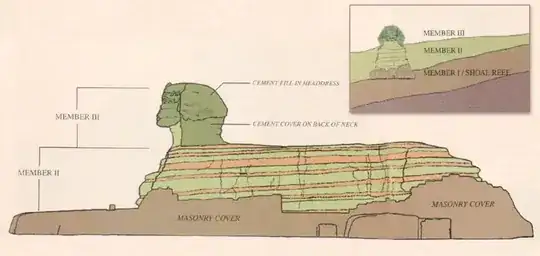
Does Robert Temple's book The Sphinx Mystery: The Forgotten Origins of the Sanctuary of Anubis have any support in the academic community?
For those of you unfamiliar with his theory, here's a quote from his Sphinx Mystery website:
Robert Temple reveals that the Sphinx was originally a monumental Anubis, the Egyptian jackal god, and that its face is that of a Middle Kingdom Pharaoh, Amenemhet II, which was a later re-carving. In addition, he provides photographic evidence of ancient sluice gate traces to demonstrate that, during the Old Kingdom, the Sphinx as Anubis sat surrounded by a moat filled with water-called Jackal Lake in the ancient Pyramid Texts-where religious ceremonies were held. He also provides evidence that the exact size and position of the Sphinx were geometrically determined in relation to the pyramids of Cheops and Chephren and that it was part of a pharaonic resurrection cult.
So, was the Sphinx originally an Anubis re-carved into Amenemhet II?

